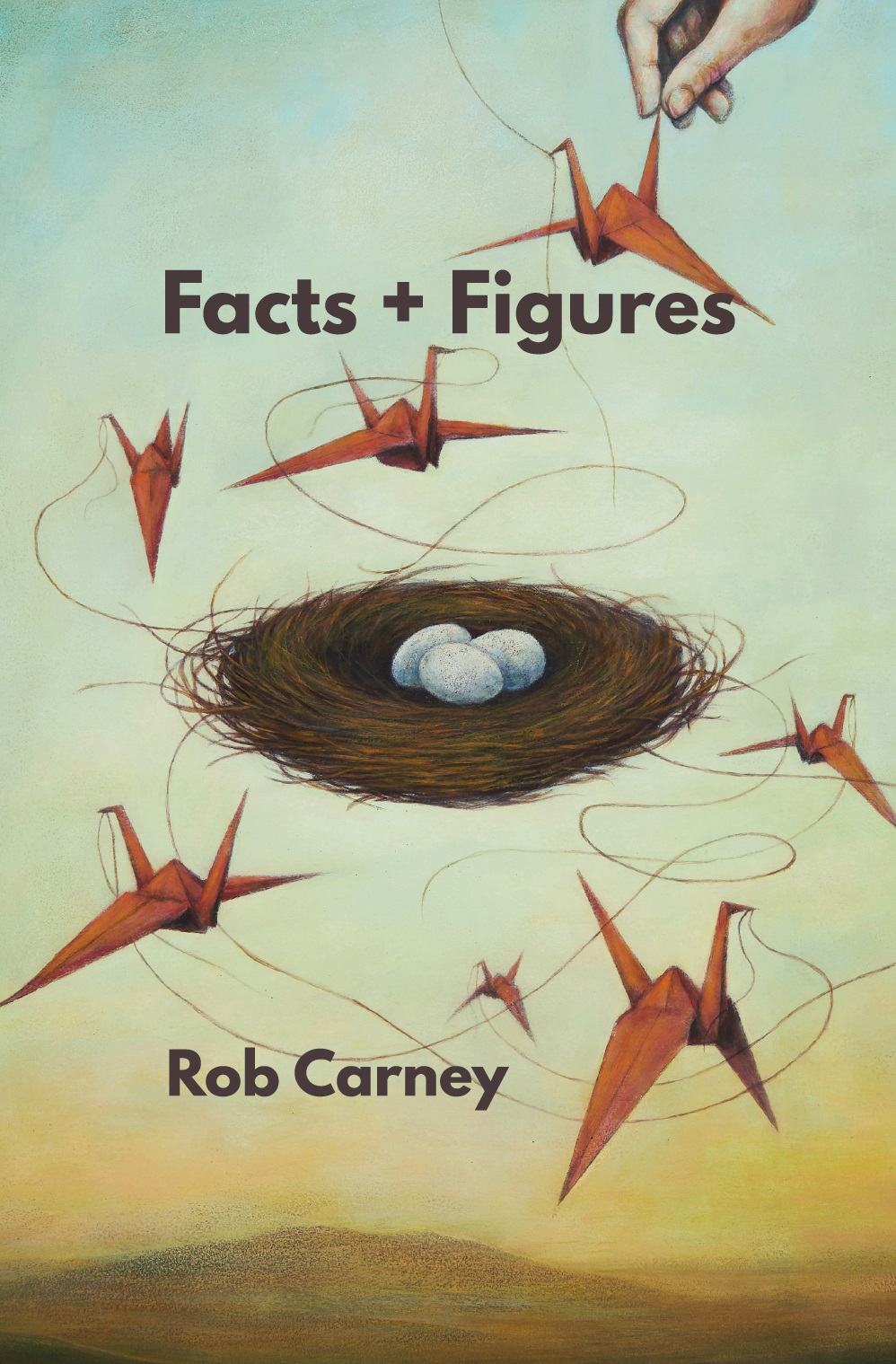
Rob Carney is someone who can find the soul in an empty room, or abandoned spot, and give it a chance to sing. His poetry explores the person in the emptiness, or the emptiness in the person, and shows how it is beautiful and enduring. In his most recent book of poetry, Facts + Figures, Carney reveals a collection of graceful prose and lyric poems, each a vignette in itself, each a small theatrical piece unfolding in small form. Carney takes us on a trip through abandonment, loneliness, connection, and the continual search for oneself in those empty spaces.
Carney explores these themes throughout his work which is divided into five sections: “Thirteen Facts,” “Thirteen Figures,” “Facts and Figures,” “Thirteen Moons,” and “For I Will Consider my Six-Year-Old.” For example, in “Fact 1,” he states that the old Packard plant in Detroit is, “the biggest abandoned warehouse in the States, more broken glass than memories. And trees have grown through the concrete now…” The warehouse does not stand empty, it continually regenerates, and Carney’s poem gives us the eyes to see this.
From the stage of the empty warehouse we travel with him to a scene of a group of students being tutored in English spelling. What seems like an exploration of the unreliability of the American spelling system (zoo, blue, view all amazingly rhyme), the view of the empty room reveals this: one of his Middle Eastern students was feeling down.
“I miss camels,” he said. “Here there are only cows.” … He’d hit on a better way to say, “I’m homesick.“
Every one of us has a place that feels like home to us. Carney examines the facets of life that create belonging as we move from story to story. Continuing on this search for a sense of place, the section “Thirteen Moons” unwinds a series of myths. Carney tells us the story of the first horse, and the raccoon – each creature moving from emptiness to its own shape in the world, just like the warehouse grew trees in its empty belly. Here’s a portion from “Why the Raccoon’s Tail Has Stripes”:
He isn’t a thief; he just looks like a bandit.
Take back whatever you like.
He knows his tail is a lesson in perspective:
Find it/Lose it, Have it/Vanish, making stripes.
In the section “Thirteen Figures,” we get a beautiful tutorial on how to truly understand the world. As Richard Feynman said, “See that bird? It’s a brown-throated thrush…and even if you know all those names for it, you still know nothing about the bird.” Carney introduces us to people and creatures, again in cameos, where the memory beautifully casts them. He explores their essence without labeling. The character in the “Best Healing Witch in Louisiana” often says, “At least that’s how I figure it” at the end of each conversation, and we can see ourselves easing nearby to sit and listen to her. She is captivating and approachable.
Each successive section leads us through more strange surroundings. While we might feel abandoned or even lost in all the newness, he grounds us in beauty. For example, in the poem “Eight Things I Know About Galileo,” he says:
…knowing we’re all sailors,
understanding that the sky is an ocean.
And beautiful.
Just open your eyes.
Carney uses hybridity throughout this work, fusing prose poetry, lyric rhymes, and lists of artifacts from a student’s belongings and writings left behind after a move. In his last section he borrows form from Christopher Smart, using more formal, traditional writings to celebrate his son. Throughout all these different forms, tones, and language choices, we see reality through different facets. Some seem more distant but always observant, and others seem personal, engaged, and vivid. Carney shows us that reality can be perceived through various lenses and moods, and perhaps seen more clearly for it. Rob Carney’s book is a walk through the world with open eyes, enjoying its beauty and finding comfort in its strangeness.
Read an interview with Rob Carney about his book Facts + Figures here.